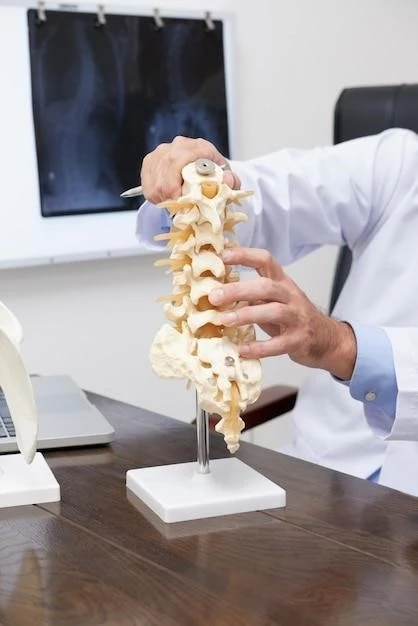Article Plan⁚ Disease ⸺ Quadriceps Sparing Myopathy
Introduction to Quadriceps Sparing Myopathy
GNE myopathy, also known as hereditary inclusion body myopathy or Quadriceps Sparing Myopathy, is a rare inherited muscle disease that primarily affects skeletal muscles. This condition leads to progressive muscle weakness typically starting in late adolescence or early adulthood. Understanding the background, genetics, and distinct clinical presentation of this myopathy is essential to provide accurate diagnosis and targeted treatments.
Disease Overview
GNE myopathy, also known as hereditary inclusion body myopathy, is a rare genetic disorder that affects skeletal muscles, leading to muscle weakness and atrophy. This condition primarily impacts the muscles used for movement and is characterized by a slow progression of symptoms, typically starting in late adolescence or early adulthood. Understanding the distinct features of this disease, such as the unique sparing of the quadriceps muscles, is crucial for accurate diagnosis and management.
Background of the Condition
Quadriceps-Sparing Myopathy, also known as GNE Myopathy or Hereditary Inclusion Body Myopathy, is a rare genetic disorder primarily affecting skeletal muscles. Initially described in Jews from the Persian region, this condition showcases a unique sparing of the quadriceps muscles. Understanding the molecular mechanisms behind this sparing and its implications on disease progression is vital for accurate diagnosis and potential therapeutic interventions. Research continues to explore the genetic basis and distinct characteristics of this myopathy to enhance future treatment strategies.

Clinical Presentation
GNE Myopathy typically presents between the ages of 20-40 with symptoms including bilateral foot drop due to anterior tibialis weakness. The progression of muscle involvement starts in the lower extremities, advancing from the anterior to posterior leg compartments, then to the hamstrings and hip girdle muscles, with a notable sparing of the quadriceps. Understanding these clinical manifestations is crucial for early recognition and personalized management strategies.
Genetic Basis of Quadriceps Sparing Myopathy
Quadriceps Sparing Myopathy, also known as GNE Myopathy, arises from mutations in the GNE gene, a crucial gene encoding the enzyme involved in sialic acid biosynthesis. This autosomal recessive condition leads to skeletal muscle atrophy and weakness, with a unique sparing of the quadriceps muscles. Unraveling the genetic underpinnings of this myopathy is fundamental for accurate diagnosis and potential advancements in therapeutic interventions.
Diagnostic Criteria
The diagnosis of Quadriceps Sparing Myopathy, also known as GNE Myopathy, is based on several key criteria. These include distal skeletal muscle weakness that typically starts in the lower legs, a selective sparing of the quadriceps muscles, an onset in the third to fourth decade of life, the absence of a mandatory family history of muscle wasting disorders for diagnosis, minimal to no elevation in serum creatine kinase levels, and characteristic histologic findings on muscle biopsies. Understanding these diagnostic criteria plays a crucial role in accurately identifying and managing patients with this rare genetic muscle disease.
Epidemiology of the Disease
Quadriceps Sparing Myopathy, also known as GNE Myopathy, has an estimated prevalence of 1 to 9 cases per million individuals. While originally described in Jews from the Persian region٫ recent cases have also been identified in Caucasian Americans and Asian Indians. This rare autosomal recessive muscle disease٫ characterized by skeletal muscle atrophy due to GNE gene mutations٫ highlights the need for further research and understanding of its global distribution and impact on diverse populations.
Distinction from Other Myopathies
Quadriceps Sparing Myopathy, also known as GNE Myopathy or Hereditary Inclusion Body Myopathy, exhibits unique characteristics that differentiate it from other myopathies. Specifically, the distinct sparing of the quadriceps muscles sets it apart, along with a slow progression to the proximal musculature and upper limbs. Understanding these differences is crucial for accurate diagnosis and personalized treatment approaches tailored to this specific myopathy.

Treatment and Management Strategies
Managing Quadriceps Sparing Myopathy involves a multidisciplinary approach to address various aspects of the disease. While no curative treatment exists, current management strategies focus on symptom alleviation, physical therapy to maintain muscle strength and flexibility, assistive devices for mobility support, and genetic counseling for affected individuals and their families. Ongoing research and clinical trials aim to develop targeted therapies to slow disease progression and improve quality of life for patients.
Research and Therapeutic Developments
Current research on Quadriceps Sparing Myopathy, also known as GNE Myopathy, focuses on understanding the molecular mechanisms behind the distinct sparing of the quadriceps muscles. This area of study aims to uncover novel therapeutic targets that could potentially slow down disease progression and improve the management of this rare genetic muscle disorder. Therapeutic developments in gene therapy, enzyme replacement therapies, and small molecule interventions are being explored to provide innovative treatment options for affected individuals. Stay updated on the latest advancements in research and therapeutic strategies to enhance the care and quality of life for patients with Quadriceps Sparing Myopathy.
Conclusion and Future Outlook
In conclusion, Quadriceps Sparing Myopathy, also known as GNE Myopathy, poses unique challenges in diagnosis and management due to its distinct clinical features and genetic basis. As research continues to delve into the molecular mechanisms behind the sparing of the quadriceps muscles, there is hope for targeted therapeutic developments that could slow disease progression and improve patient outcomes. By staying informed about the latest advancements in research and therapeutic strategies, healthcare professionals can better support individuals affected by this rare genetic muscle disease and work towards enhancing their quality of life in the future.
